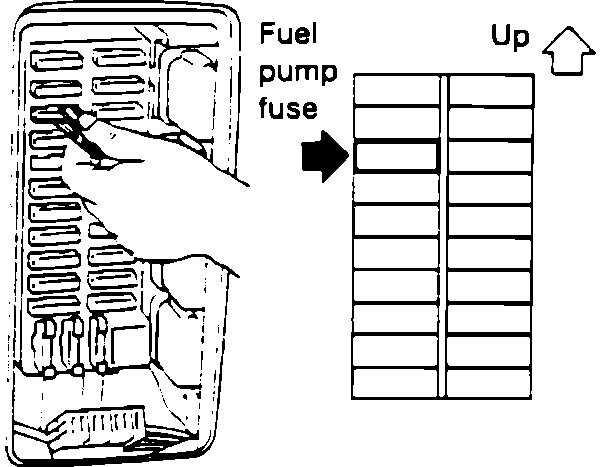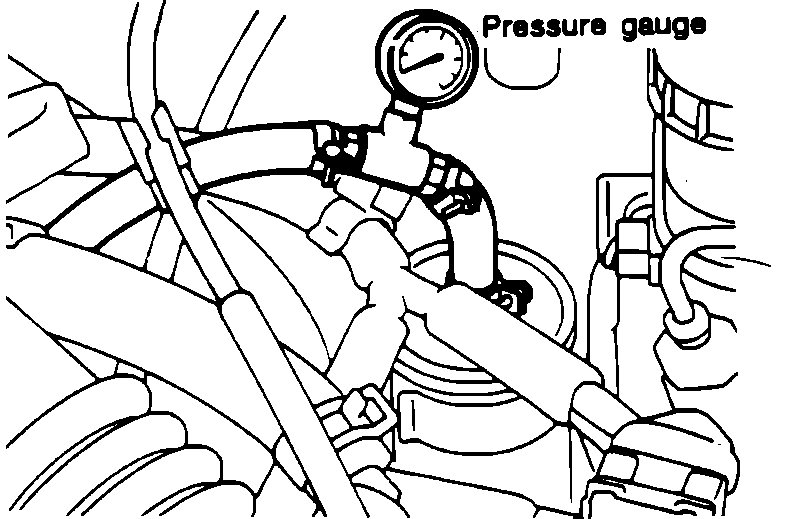Hi and thanks for using 2CarPros.com.
Honestly, if the regulator is causing the fuel pressure to drop below the manufacturer's specs, yes. Even though you have an injector pulse, there may not be enough pressure to open the injector itself.
Here are general directions showing how to check fuel pressure and a regulator:
https://www.2carpros.com/articles/how-to-check-fuel-system-pressure-and-regulator
Here are the directions and specifications specific to your vehicle for checking pressure and the regulator. All attached pictures correlate with these directions.
___________________________________________
FUEL PRESSURE TEST
Fuel Pump Fuse
NOTE: To obtain an accurate fuel pressure reading the engine must by running. Basic fuel pump operation can be verified in a no start condition by observing gauge reading while cranking engine. Fuel pressure should be approximately 43 psi (294 kPa).
1. Remove fuel pump fuse from underdash fuse box.
2. Start engine.
3. When engine stalls, crank or attempt to restart engine 2 or 3 times to release pressure.
4. Turn ignition switch off and reinstall fuel pump fuse.
NOTE: Steps 1 through 4 are provided to release fuel system pressure to eliminate fuel spray.
5. Disconnect fuel line from fuel filter and connect a suitable pressure gauge as shown.
6. Disconnect and plug vacuum line from fuel pressure regulator. Connect vacuum pump to pressure regulator.
7. Start engine and idle.
8. Fuel pressure should be approx. 43 psi (294 kPa). If pressure is correct proceed to step 10, if not OK continue.
9. Using pliers, gently pinch fuel return line at fuel rail. If fuel pressure rises to approx. 43 psi (294 kPa) pressure regulator is defective. If pressure still is low or did not change, check fuel filter before replacing pump.
10. Slowly apply vacuum to the pressure regulator while watching fuel pressure.
11. Fuel pressure should decrease as vacuum increases, down to approx. 33 psi (226 kPa) at 20 in.Hg.
12. If fuel pressure does not respond to the application of vacuum, check fuel return line for restriction prior to replacing fuel pressure regulator.
_______________________________________
Let me know what you find or if you have other questions.
Take care,
Joe
Images (Click to make bigger)
Sunday, September 2nd, 2018 AT 8:37 PM





